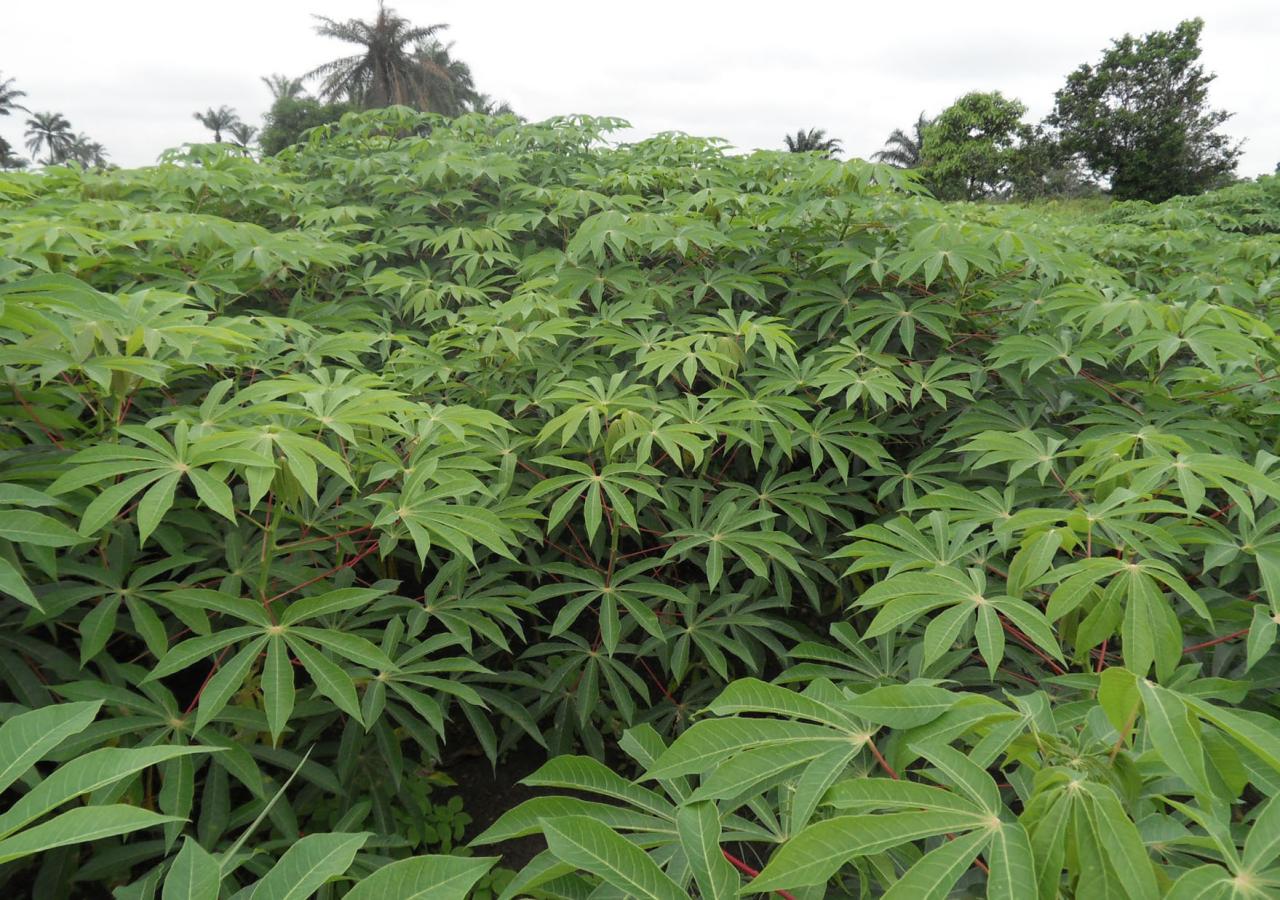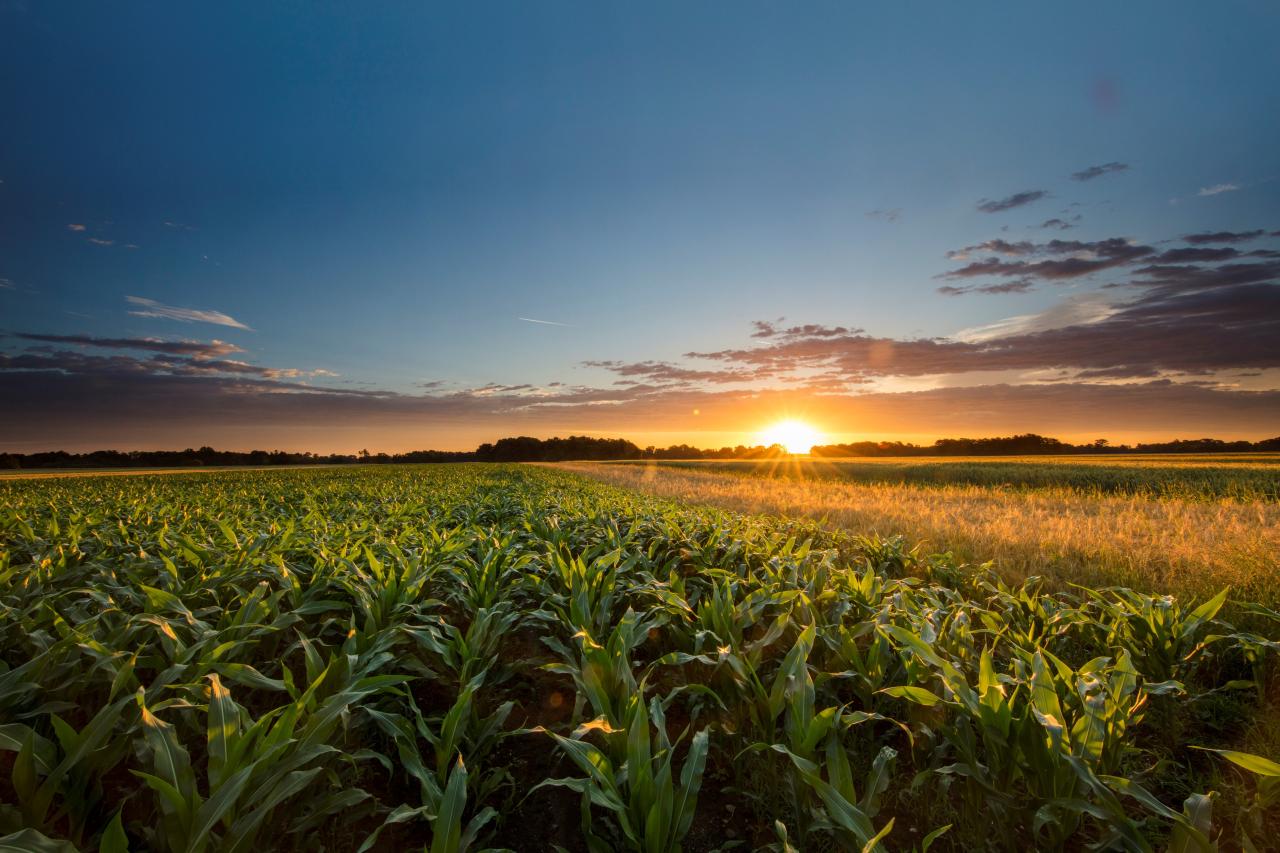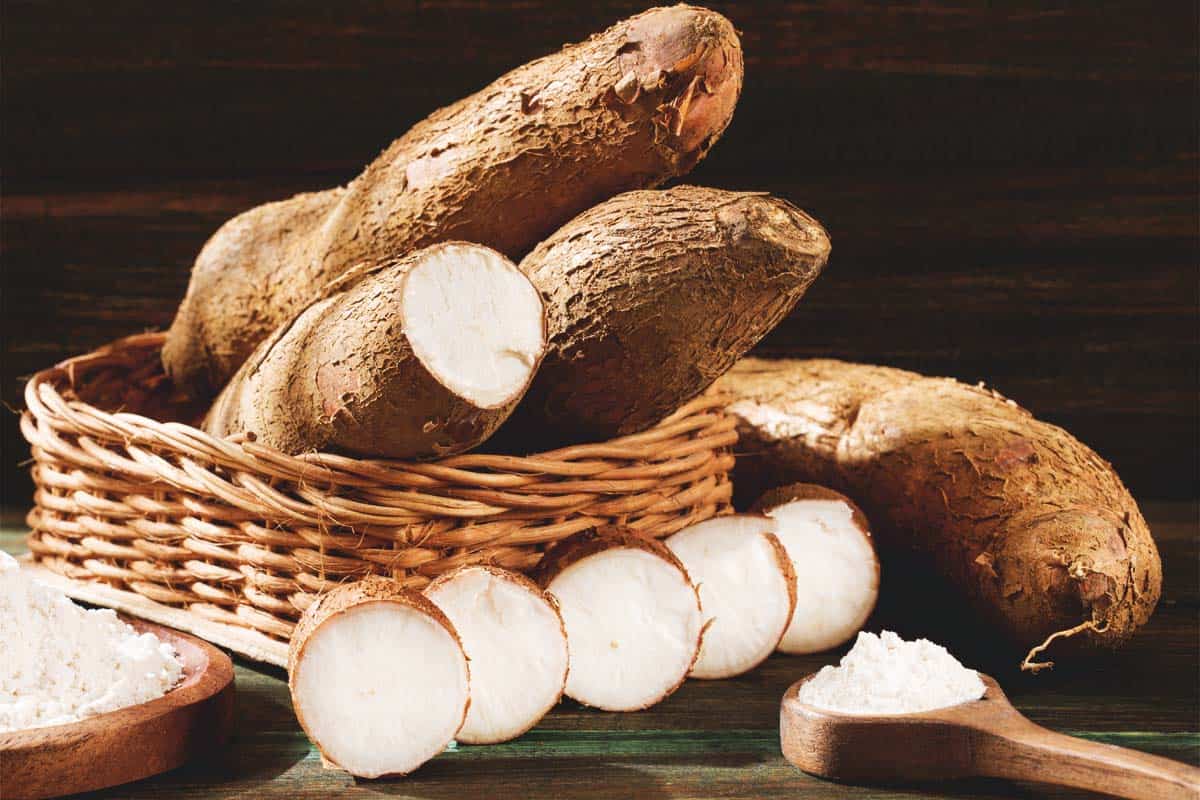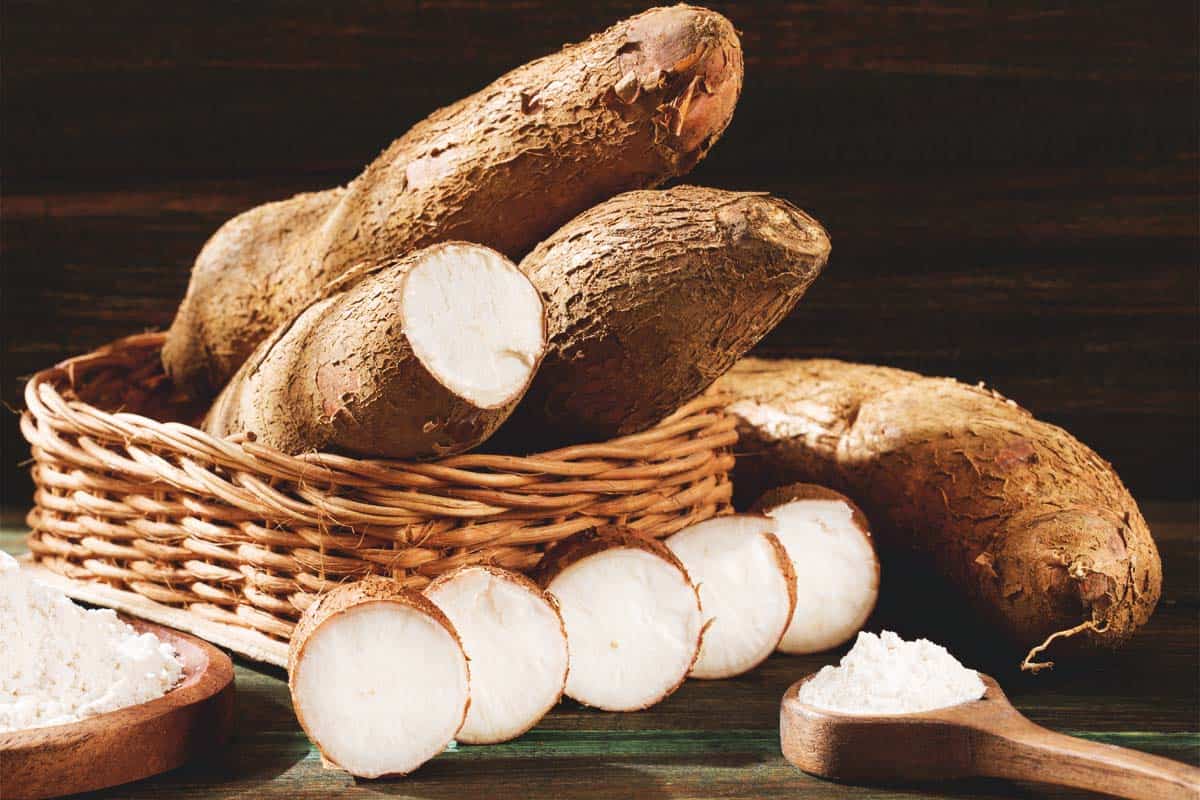How to Grow Cassava Leaf Successfully: Expert Tips for a Thriving and Nutritious Crop – Cassava leaves, a nutritional powerhouse, are gaining popularity as a delicious and versatile ingredient. This guide provides comprehensive advice from planting to harvesting, empowering you to cultivate a bountiful and healthy crop.
Whether you’re an experienced gardener or a curious beginner, this detailed exploration will equip you with the knowledge and skills to achieve success in your cassava leaf journey.
From understanding the ideal climate and soil conditions to mastering propagation techniques, we delve into every aspect of cassava leaf cultivation. We’ll explore essential care practices, including watering, weeding, and nutrient management, ensuring your plants thrive. Additionally, we’ll equip you with strategies to combat common pests and diseases, protecting your crop from harm.
Finally, we’ll guide you through harvesting, storage, and culinary uses, allowing you to enjoy the fruits of your labor.
Understanding Cassava Leaf Growth: How To Grow Cassava Leaf Successfully: Expert Tips For A Thriving And Nutritious Crop
Cassava, a starchy root vegetable, is a valuable food source in many tropical and subtropical regions. Its leaves are also highly nutritious and are often consumed as a leafy green vegetable. To maximize cassava leaf production, it’s essential to understand the optimal conditions for its growth.
Cultivating cassava leaves requires a well-drained soil and consistent moisture, much like the Jacaranda tree, which thrives in similar conditions. To learn more about cultivating this beautiful flowering tree, explore Jacaranda Tree Benefits: How to Grow and Maintain This Beautiful Tree Effectively.
Back to cassava, ensure adequate sunlight and proper fertilization for optimal growth. With the right care, you can enjoy a bountiful harvest of nutritious cassava leaves.
Climate Conditions
Cassava thrives in warm climates with abundant sunshine. Optimal temperature ranges for growth are between 25°C and 30°C (77°F and 86°F). The plant is sensitive to frost and can be damaged by temperatures below 10°C (50°F). Cassava also requires a significant amount of rainfall, typically between 1000 and 2000 mm (39 and 79 inches) per year.
However, it can tolerate periods of drought, especially during its initial growth stages.
Soil Requirements
Cassava prefers well-drained, sandy loam soils with a pH level between 5.5 and 6.5. The soil should be rich in organic matter to provide essential nutrients and improve water retention. Cassava can tolerate acidic soils, but growth is significantly reduced in highly alkaline soils.
It’s important to avoid planting cassava in waterlogged areas as this can lead to root rot.
Key Stages of Cassava Leaf Development
Cassava leaf development occurs in several distinct stages.
- Germination:This stage begins when the cassava seed is planted and the first leaves emerge from the soil. Germination typically takes 7-14 days, depending on the environmental conditions.
- Vegetative Growth:During this stage, the cassava plant focuses on developing its leaves and stems. The plant produces a large number of leaves, which are the primary photosynthetic organs. This stage can last for several months, depending on the variety of cassava and the growing conditions.
- Flowering:Once the plant has reached a certain size, it begins to produce flowers. Flowering is typically triggered by changes in day length and temperature. The flowers are not essential for leaf production but can be a sign of healthy growth.
- Leaf Harvest:Cassava leaves can be harvested when they are fully mature and have reached their peak nutritional value. The ideal time for harvesting varies depending on the variety and the desired size of the leaves. It’s generally recommended to harvest leaves from plants that are at least 6 months old.
Planting and Propagation
Cassava propagation is achieved through vegetative methods, primarily using stem cuttings. This method is efficient and ensures the production of plants with similar traits to the parent plant. Let’s delve into the specifics of planting and propagating cassava.
Planting Cassava Cuttings, How to Grow Cassava Leaf Successfully: Expert Tips for a Thriving and Nutritious Crop
Planting cassava cuttings is a straightforward process. Here’s a step-by-step guide:
- Select Healthy Cuttings:Choose mature stems from healthy cassava plants, free from diseases and pests. Each cutting should be about 1-2 feet long, with at least 3-4 nodes (the bumps on the stem where leaves grow).
- Prepare the Cuttings:Remove the leaves from the bottom 2-3 nodes of the cutting. This encourages root development.
- Prepare the Planting Site:Choose a well-drained, sunny location. The soil should be fertile and loose. If necessary, amend the soil with compost or manure to improve its fertility.
- Make Planting Holes:Dig holes that are about 12-18 inches deep and 12-18 inches wide. The depth should be sufficient to accommodate the entire cutting.
- Plant the Cuttings:Place the cuttings vertically in the holes, ensuring that the bottom 2-3 nodes are buried in the soil. The top of the cutting should be about 2-3 inches above the soil surface.
- Water Thoroughly:Water the cuttings immediately after planting to promote root development.
- Maintain Moisture:Water regularly, especially during the first few weeks after planting, to ensure the cuttings establish roots.
Cassava Propagation Methods
Cassava can be propagated using two primary methods:
Stem Cuttings
This is the most common and efficient method of cassava propagation. It involves using sections of the stem with at least 3-4 nodes. Stem cuttings are easy to handle, store, and transport. They are also relatively inexpensive to produce.
Root Division
This method involves dividing the root system of a mature cassava plant into smaller sections, each with a portion of the stem attached. While less common than stem cuttings, root division can be effective in certain situations.
Ideal Spacing and Depth for Planting
Spacing and depth are crucial for cassava growth.
Spacing
Cassava plants need adequate space to grow and thrive. Spacing between plants depends on the variety and the growing conditions. However, a general guideline is to space plants 2-3 feet apart in rows, with rows spaced 3-4 feet apart.
Depth
The depth of planting should be sufficient to accommodate the entire cutting. The bottom 2-3 nodes of the cutting should be buried in the soil. This ensures proper root development and stability for the plant.
Essential Care Practices
Providing cassava plants with the right care is crucial for maximizing leaf yield and ensuring a healthy, productive crop. These practices focus on maintaining optimal growing conditions and minimizing stress on the plants.
Watering Cassava Plants
Regular watering is essential for cassava leaf growth, especially during the initial stages of development. However, the frequency and amount of water required vary depending on factors like rainfall patterns, soil type, and the plant’s stage of growth.
- Establish a watering schedule based on rainfall patterns:In areas with regular rainfall, supplemental watering may not be necessary. However, during dry periods, irrigation is crucial to maintain soil moisture.
- Monitor soil moisture:The best way to determine if your cassava plants need watering is to check the soil moisture. Dig a few inches into the soil around the base of the plant. If the soil feels dry, it’s time to water.
- Water deeply and infrequently:Deep watering encourages root growth and helps the plants develop a strong root system. Water thoroughly, allowing the water to penetrate the soil deeply, rather than providing frequent shallow watering.
- Avoid overwatering:While cassava plants need water, overwatering can lead to root rot and other problems. Ensure the soil has adequate drainage to prevent waterlogging.
Weeding Cassava Plants
Weeds compete with cassava plants for nutrients, water, and sunlight, hindering their growth and yield. Regular weeding is crucial to maintain a healthy and productive cassava crop.
Cultivating a thriving cassava leaf crop requires careful attention to soil conditions, moisture levels, and sunlight exposure. Similar to maximizing the growth of citronella, a popular insect repellent, understanding the plant’s needs is crucial. For instance, just as The Best Practices for Growing Citronella Plant: Tips for a Lush and Effective Herb suggests, regular pruning and fertilization can boost cassava leaf production.
With the right techniques, you can enjoy a plentiful harvest of this nutritious and versatile green.
- Remove weeds manually:Hand weeding is an effective way to remove weeds, especially in small-scale plantings. Use a hoe or trowel to remove weeds from around the base of the cassava plants.
- Use herbicides:Herbicides can be an effective way to control weeds in larger plantings. However, it’s crucial to select herbicides specifically designed for cassava and follow the manufacturer’s instructions carefully to avoid damaging the cassava plants.
- Mulch around the plants:Applying a layer of mulch around the base of the cassava plants can help suppress weed growth. Organic mulches, such as straw or wood chips, are beneficial as they decompose and add nutrients to the soil.
Essential Nutrients for Cassava Leaf Growth
Cassava plants require a balanced supply of essential nutrients for optimal growth and leaf production. The table below Artikels key nutrients and their application methods:
Nutrient |
Importance |
Application Methods |
|---|---|---|
Nitrogen (N) |
Promotes leaf growth and development. |
Apply nitrogen-rich fertilizers, such as urea or ammonium sulfate, during the early stages of growth. |
Phosphorus (P) |
Essential for root development and overall plant vigor. |
Apply phosphorus-rich fertilizers, such as superphosphate, during planting or as a side dressing. |
Potassium (K) |
Enhances disease resistance and improves plant health. |
Apply potassium-rich fertilizers, such as potassium chloride, during the growing season. |
Calcium (Ca) |
Plays a vital role in cell wall formation and disease resistance. |
Apply calcium-rich fertilizers, such as lime or gypsum, to the soil before planting. |
Magnesium (Mg) |
Essential for chlorophyll production and photosynthesis. |
Apply magnesium-rich fertilizers, such as Epsom salts, as a foliar spray or as a soil application. |
Pest and Disease Management

Cassava plants, like any other crop, are susceptible to various pests and diseases that can significantly impact their growth and yield. Understanding common pests and diseases, along with effective control methods, is crucial for ensuring a healthy and productive cassava leaf crop.
Pest Control
Several pests can attack cassava plants, causing damage to leaves, stems, and roots. Effective control methods include:
- Mealybugs:These sap-sucking insects cause leaf distortion and wilting. Control methods include using insecticidal soap, neem oil, or biological control agents like ladybugs.
- Cassava Mealybug:This pest infests the stems and leaves, causing stunting and leaf drop. Control measures include using insecticides, cultural practices like crop rotation, and biological control agents like parasitic wasps.
- Cassava Green Mite:This mite feeds on the underside of leaves, causing yellowing and leaf drop. Control methods include using miticides, organic pesticides, and maintaining good hygiene in the field.
- Cassava Mosaic Virus (CMV):This viral disease is transmitted by whiteflies. Symptoms include mosaic patterns on leaves, stunted growth, and reduced yield. Prevention is key, including using virus-free planting material and controlling whitefly populations.
Disease Management
Several diseases can affect cassava plants, causing various symptoms like leaf spots, root rot, and wilting. Here are some strategies for preventing and managing diseases:
- Cassava Bacterial Blight:This bacterial disease causes leaf spots and stem rot. Control methods include using disease-free planting material, crop rotation, and avoiding excessive irrigation.
- Cassava Brown Streak Disease (CBSD):This viral disease is transmitted by whiteflies and mealybugs. Symptoms include brown streaks on leaves, stem lesions, and reduced yield. Prevention is key, including using disease-free planting material and controlling vector populations.
- Cassava Anthracnose:This fungal disease causes leaf spots and stem lesions. Control methods include using fungicides, maintaining good hygiene in the field, and avoiding excessive irrigation.
Pest and Disease Control Methods Comparison
Here is a table comparing different pest and disease control methods, including their pros and cons:
Method |
Pros |
Cons |
|---|---|---|
Insecticides |
Effective in killing pests |
Can harm beneficial insects, pollute the environment, and lead to pest resistance |
Fungicides |
Effective in controlling fungal diseases |
Can harm beneficial organisms, pollute the environment, and lead to fungicide resistance |
Biological Control |
Environmentally friendly, targets specific pests or diseases |
May not be as effective as chemical control, can take time to establish |
Cultural Practices |
Environmentally friendly, helps prevent pest and disease outbreaks |
May not be sufficient to control severe infestations or outbreaks |
Harvesting and Storage

Harvesting cassava leaves is a crucial step in maximizing the yield and nutritional value of your crop. Proper techniques ensure you obtain the most tender and flavorful leaves while maintaining the health of your cassava plants. Understanding storage methods is equally important for preserving the freshness and nutritional content of your harvested leaves.
Harvesting Cassava Leaves
Harvesting cassava leaves involves selecting the right leaves and cutting them appropriately. The optimal time to harvest cassava leaves is when they are young and tender, typically 4-6 weeks after planting. This period corresponds to the time when the leaves are at their peak nutritional value.
- Select the right leaves:Choose leaves that are vibrant green, healthy, and free from any signs of disease or pests. Avoid harvesting older, mature leaves, as they tend to be tougher and less palatable.
- Cut the leaves properly:Cut the leaves just above the petiole (leaf stalk), leaving at least two nodes on the stem. This allows for new growth and ensures the plant’s continued productivity.
Storing Harvested Cassava Leaves
Storing harvested cassava leaves properly helps maintain their freshness and nutritional content. There are several methods for storing cassava leaves, each with its advantages and disadvantages.
- Refrigeration:Refrigeration is the most common method for short-term storage. Wrap the harvested leaves in a damp paper towel or cloth and store them in a sealed plastic bag or container in the refrigerator. Cassava leaves can be stored this way for up to 3-5 days.
- Freezing:Freezing is an excellent option for longer-term storage. Blanch the leaves for 1-2 minutes in boiling water before freezing them in airtight containers or freezer bags. Frozen cassava leaves can last for several months.
Preserving Cassava Leaves
Preserving cassava leaves allows you to enjoy their nutritional benefits even when they are not in season. There are several methods for preserving cassava leaves, each with its own advantages and disadvantages.
- Drying:Drying is a traditional method for preserving cassava leaves. Wash the leaves thoroughly and dry them in the sun or using a food dehydrator. Dried cassava leaves can be stored in airtight containers for several months.
- Pickling:Pickling is another method for preserving cassava leaves. This involves submerging the leaves in a brine solution and allowing them to ferment. Pickled cassava leaves can be stored for several months.
Culinary Uses and Nutritional Benefits

Cassava leaves, often referred to as “cassava greens” or “Manihot leaves,” are a nutritious and versatile ingredient in various cuisines worldwide. They are a rich source of essential vitamins, minerals, and antioxidants, making them a valuable addition to a healthy diet.
Culinary Uses of Cassava Leaves
Cassava leaves are widely consumed in many African, Asian, and Latin American cuisines. They are typically cooked as a leafy green vegetable, similar to spinach or kale, and can be incorporated into various dishes.
- Soups and Stews:Cassava leaves are a common ingredient in soups and stews, adding a distinct flavor and nutritional value. They are often simmered with other vegetables, meat, or fish to create hearty and flavorful meals.
- Sautéed Dishes:Cassava leaves can be sautéed with garlic, onions, and spices for a simple and flavorful side dish. They can also be combined with other vegetables, such as tomatoes, peppers, and mushrooms, for a more complex flavor profile.
- Stir-Fries:In Asian cuisine, cassava leaves are frequently used in stir-fries, where they are quickly cooked with various vegetables, meat, or tofu. The leaves add a distinct earthy flavor and a vibrant green color to the dish.
- Salads:Cassava leaves can be added to salads for a boost of nutrition and a unique flavor. They are often blanched or steamed before being added to salads to soften their texture and enhance their flavor.
Recipes Showcasing the Versatility of Cassava Leaves
Here are a few recipes that showcase the versatility of cassava leaves in cooking:
- Nigerian Egusi Soup:This popular soup features a blend of ground melon seeds, cassava leaves, and other vegetables, creating a hearty and flavorful meal.
- Brazilian Moqueca:This seafood stew incorporates cassava leaves along with coconut milk, shrimp, fish, and spices for a unique and flavorful dish.
- Filipino Ginataan:This dish features cassava leaves cooked in coconut milk with shrimp, pork, or chicken, creating a creamy and savory meal.
Nutritional Value and Health Benefits of Cassava Leaves
Cassava leaves are an excellent source of essential vitamins, minerals, and antioxidants.
- Vitamins:Cassava leaves are rich in vitamin A, vitamin C, vitamin K, and folate, all of which are crucial for maintaining overall health.
- Minerals:Cassava leaves are also a good source of minerals such as iron, calcium, magnesium, and potassium, which are essential for various bodily functions.
- Antioxidants:Cassava leaves contain various antioxidants, such as flavonoids and carotenoids, which help protect the body from damage caused by free radicals.
Cassava leaves are particularly high in vitamin A, which is essential for maintaining healthy vision, skin, and immune function.
The nutritional value of cassava leaves makes them a valuable addition to a healthy diet. They can help promote overall health, support immune function, and protect against chronic diseases.
End of Discussion
Growing cassava leaves successfully is a rewarding experience, providing a source of nutritious food and culinary creativity. By following the expert tips Artikeld in this guide, you can cultivate a thriving crop, reaping the benefits of this versatile and flavorful ingredient.
Embrace the knowledge and techniques presented here, and embark on your journey to a successful and bountiful cassava leaf harvest.
Key Questions Answered
What is the best time of year to plant cassava cuttings?
The best time to plant cassava cuttings is during the warm season, when temperatures are consistently above 60°F (15°C). This allows the cuttings to root and establish themselves quickly.
How often should I water my cassava plants?
Cassava plants need regular watering, especially during the establishment phase. Water deeply but infrequently, allowing the soil to dry slightly between waterings.
What are the signs of a cassava leaf disease?
Signs of cassava leaf diseases include leaf discoloration, wilting, spots, or lesions. If you notice any of these symptoms, consult a local agricultural expert for diagnosis and treatment.
Can I grow cassava leaves in a container?
Yes, you can grow cassava leaves in a container, but it’s important to choose a large pot with good drainage. Ensure the container is filled with well-draining potting mix.
What are some creative ways to use cassava leaves in cooking?
Cassava leaves can be used in soups, stews, stir-fries, and even as a filling for wraps and dumplings. They add a unique flavor and texture to dishes.
